The EU General Court Has Extinguished Louis Vuitton Rights To Exclusively Use Its Trademarked Chequerboard Logo.
The European General Court dished out a double blow to LV last week, cancelling two trademarks belonging to the luxury brand that protected its iconic chequerboard print
The signature print known as the ‘Damier’, was first introduced on its canvas trunks in 1888, and is arguably the brands most celebrated pattern next to the LV monogram. The first trademark registration covered a dark brown and beige pattern and was registered as a trademark in 1998. The second trademark registration covered the same pattern but in black and grey and was registered as a trademark in 2008.
In two decisions dated 21 April 2015, the European General Court held that the trademark registrations were ‘basic and banal,’ and ‘lacked distinctive character.’ The legal battle, however, stretches back much further to 2008 when Louis Vuitton originally registered the trademark, which was then called into question in 2009 by German retailer Nanu-Nana who filed an application to have it repealed. In 2011, the request to invalidate the trademark was granted, and the legal team at Louis Vuitton has been fighting to appeal the decision ever since.
This past month, the European General Court has chosen to uphold the decision made by the First Board of Appeal in 2011. Both the Cancellation Division and the EU Board of Appeal took the view that "the chequerboard pattern trade mark, was…basic and banal, composed of very simple elements and that it was well-known that the features had been commonly used with a decorative purpose in relation to various goods.” The courts found that the trademarks did not have any “features capable of distinguishing it from other representations of chequerboards," and as such was not capable of fulfilling the essential ‘identification’ or ‘origin’ function of a trade mark, and therefore was 'devoid of any distinctive character.'
Louis Vuitton had argued that the pattern was complex, particular and original and these arguments were dismissed by the Court. Essentially, the court felt that the checkerboard pattern lacked any brand-specific features, (unlike the signature LV monogram), capable of “individualising it in such a way that it would not appear as a common and basic chequerboard pattern," or that would "prevent the public perceiving the pattern as commonplace and everyday."
The courts also found that LV had failed to “demonstrate that the relevant public would be in the habit of making an assumption on the commercial origin of the goods at hand based on patterns.” As the refusal applied across the entire EU, Louis Vuitton had to prove that consumers in every member state would relate the chequerboard marks back to Louis Vuitton. It was unsuccessful in doing so; the Court found that LV had failed to submit sufficient evidence of use to demonstrate that the marks had acquired distinctiveness in each of the then 15 EU member states from the date of registration, and therefore the European General Court held that it was right that the registrations should be cancelled.
Conclusion
Many major brands fight long and expensive legal battles to try to retain the exclusivity of a pattern or colour that they believe represents their brand. British luxury brand Burberry went through a similar struggle in 2013 when it appealed against a decision made by the Chinese Trade Mark Office in relation to the Burberry Check that revoked the luxury brands using the haymarket trademark on leather goods.
As one of the world’s most valuable luxury brand, it is going to be useful to see what sort of impact the Court’s judgment will have on the Louis Vuitton’s future brand protection strategies.
Commenting on the EU ruling, Sharon Daboul, a trademark attorney at intellectual property law firm EIP, said: “This trademark loss is a double-blow to Louis Vuitton. It can no longer claim to have a monopoly on the chequerboard pattern as applied to leather goods and bags, even if it was the first to come up with it. This loss might make it harder for the company to protect its bags against competitors or counterfeiters in the EU as it will no longer be able to rely on its trademark registrations. It also serves as a warning to brand owners that trademark registrations are not safe from challenge. An essential function of a trademark is to serve as a badge of trade origin. Trademarks must have distinctive character and a trademark loses its ability to be distinctive if it becomes commonplace in the trade; this can be as a result of the acts, or inactivity of the brand owner. If a trademark is allowed to become commonplace such that it can no longer distinguish a product from competitors, its value is lost and a pro-active third party can apply to cancel it."
Despite this, it seems very possible that Louis Vuitton will try to contest this ruling again, as the brand still has the opportunity to appeal the decision to the EU Court of Justice. Fashion Law & business reached out to Louis Vuitton for comment today, but so far has not received a response.

